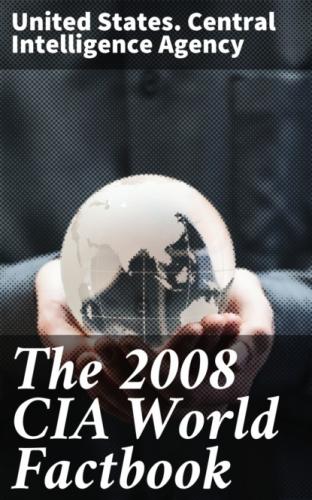WHO, WIPO, WMO
Diplomatic representation in the US:
chief of mission: Ambassador GHIRMAI Ghebremariam chancery: 1708 New Hampshire Avenue NW, Washington, DC 20009 telephone: [1] (202) 319–1991 FAX: [1] (202) 319–1304 consulate(s) general: Oakland (California)
Diplomatic representation from the US:
chief of mission: Ambassador Ronald MCMULLEN embassy: 179 Ala Street, Asmara mailing address: P. O. Box 211, Asmara telephone: [291] (1) 120004 FAX: [291] (1) 127584
Flag description:
red isosceles triangle (based on the hoist side) dividing the flag into two right triangles; the upper triangle is green, the lower one is blue; a gold wreath encircling a gold olive branch is centered on the hoist side of the red triangle
Economy
Eritrea
Economy - overview:
Since independence from Ethiopia in 1993, Eritrea has faced the economic problems of a small, desperately poor country, accentuated by the recent implementation of restrictive economic policies. Eritrea has a command economy under the control of the sole political party, the People's Front for Democracy and Justice (PFDJ). Like the economies of many African nations, the economy is largely based on subsistence agriculture, with 80% of the population involved in farming and herding. The Ethiopian-Eritrea war in 1998–2000 severely hurt Eritrea's economy. GDP growth fell to zero in 1999 and to −12.1% in 2000. The May 2000 Ethiopian offensive into northern Eritrea caused some $600 million in property damage and loss, including losses of $225 million in livestock and 55,000 homes. The attack prevented planting of crops in Eritrea's most productive region, causing food production to drop by 62%. Even during the war, Eritrea developed its transportation infrastructure, asphalting new roads, improving its ports, and repairing war-damaged roads and bridges. Since the war ended, the government has maintained a firm grip on the economy, expanding the use of the military and party-owned businesses to complete Eritrea's development agenda. The government strictly controls the use of foreign currency, limiting access and availability. Few private enterprises remain in Eritrea. Eritrea's economy is heavily dependent on taxes paid by members of the diaspora. Erratic rainfall and the delayed demobilization of agriculturalists from the military continue to interfere with agricultural production, and Eritrea's recent harvests have not been able to meet the food needs of the country. The government continues to place its hope for additional revenue on the development of several international mining projects. Despite difficulties for international companies in working with the Eritrean government, a Canadian mining company signed a contract with the GSE in 2007 and plans to begin mineral extraction in 2010. Eritrea also anticipates opening a free trade zone at the port of Massawa in 2008. Eritrea's economic future depends upon its ability to master social problems such as illiteracy, unemployment, and low skills, and more importantly, on the government's willingness to support a true market economy.
GDP (purchasing power parity):
$3.619 billion (2007 est.)
GDP (official exchange rate):
$1.316 billion (2007 est.)
GDP - real growth rate:
1.3% (2007 est.)
GDP - per capita (PPP):
$800 (2007 est.)
GDP - composition by sector:
agriculture: 17.5% industry: 23.2% services: 59.3% (2007 est.)
Labor force:
NA
Labor force - by occupation:
agriculture: 80% industry and services: 20% (2004 est.)
Unemployment rate:
NA%
Population below poverty line:
50% (2004 est.)
Household income or consumption by percentage share:
lowest 10%: NA% highest 10%: NA%
Investment (gross fixed):
19.1% of GDP (2007 est.)
Budget:
revenues: $234.6 million expenditures: $471.4 million (2007 est.)
Fiscal year:
calendar year
Inflation rate (consumer prices):
17% (2007 est.)
Stock of money:
$749.1 million (31 December 2007)
Stock of quasi money:
$932.9 million (31 December 2007)
Stock of domestic credit:
$1.711 billion (31 December 2007)
Agriculture - products:
sorghum, lentils, vegetables, corn, cotton, tobacco, sisal; livestock, goats; fish
Industries:
food processing, beverages, clothing and textiles, light manufacturing, salt, cement
Industrial production growth rate:
2% (2007 est.)
Electricity - production:
253 million kWh (2006 est.)
Electricity - consumption:
216 million kWh (2006 est.)
Electricity - exports:
0 kWh (2007 est.)
Electricity - imports:
0 kWh (2007 est.)
Electricity - production by source:
fossil fuel: 100% hydro: 0% nuclear: 0% other: 0% (2001)
Oil - production:
0 bbl/day (2007 est.)
Oil - consumption:
5,186 bbl/day (2006 est.)
Oil - exports:
54.74 bbl/day (2005)
Oil - imports:
4,924 bbl/day (2005)
Oil - proved reserves:
0 bbl (1 January 2006 est.)
Natural gas - production:
0 cu m (2007 est.)
Natural gas - consumption:
0 cu m (2007 est.)
Natural gas - exports:
0 cu m (2007 est.)
Natural gas - imports:
0 cu m (2007 est.)
Natural gas - proved reserves:
0 cu m (1 January 2006 est.)
Current account balance:
-$205 million (2007 est.)
Exports:
$12 million f.o.b. (2007 est.)
Exports - commodities:
livestock, sorghum, textiles, food, small manufactures
Exports - partners:
Italy 34.4%, China 16.2%, Sudan 15.2%, France 9.4%, Saudi Arabia 5.2%, Australia 4.4% (2007)
Imports:
$573 million f.o.b. (2007 est.)
Imports - commodities:
machinery,
